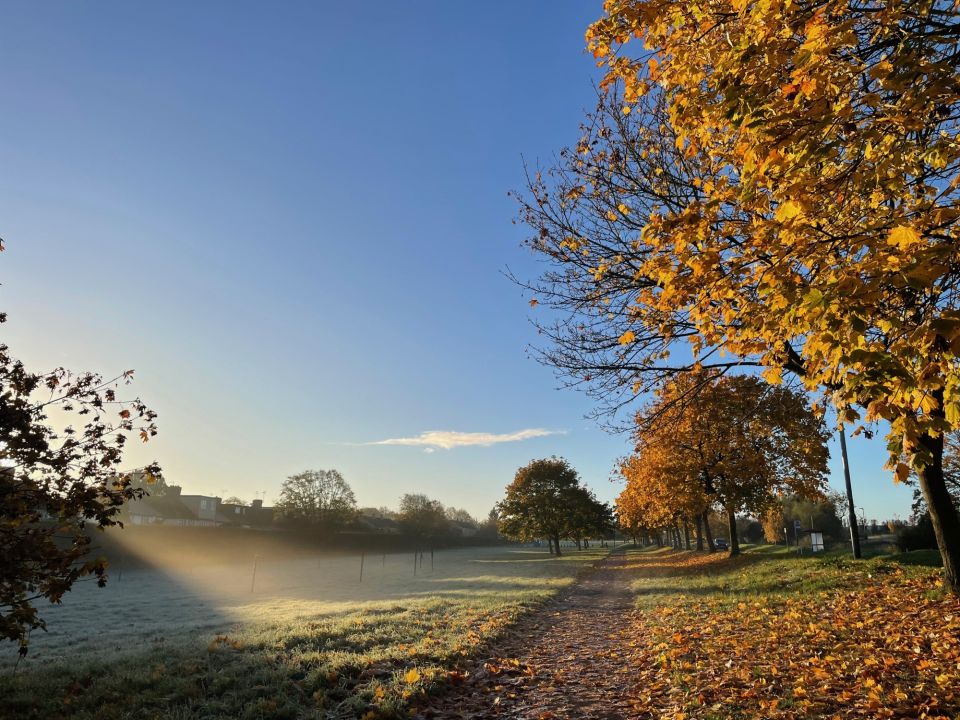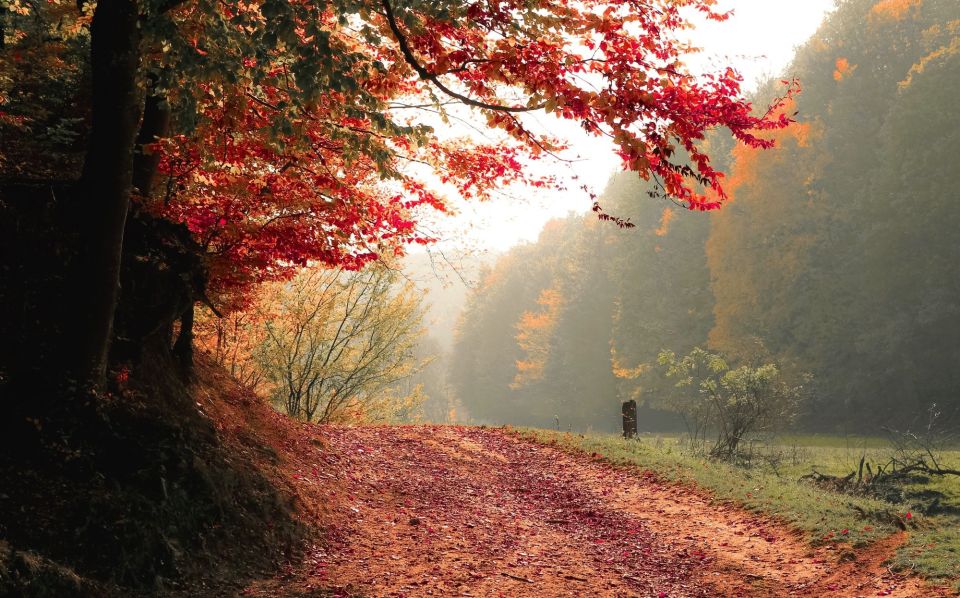Trees in Autumn

Arguably one of the most notable signs that autumn has arrived in the UK is the change in colours amongst our trees. Whilst these glorious colours provide exceptional beauty in towns and cities with splashes of gold and crimson, this process is actually nature's way of preparing for cooler temperatures and winter.

Why the change in colour?
Chlorophyll is a chemical responsible for producing the green colouring we see on tree leaves between May and October. The chemical supports trees producing energy from photosynthesis and helps trap light for the tree. As temperatures begin to cool, our trees start to save their energy and this means stopping the production of chlorophyll. It’s when the chlorophyll begins to reduce that we see the familiar red, yellow and orange pigments on tree leaves, bringing with them some outstanding autumnal beauty to our urban areas!
Fun fact: the yellow and oranges are normally hiding in the leaf all year round thanks to the carotenoid chemical, but it isn’t until the green disappears that they are revealed. The red colour is created by the pigment anthocyanin and is actively produced by the tree but the reason is still a mystery. Why waste energy producing something for a part you’re about to get rid of? One theory is that it protects the leaves from sunlight until all the useful materials are absorbed and the leaves can fall away.


Depending on the weather and climate, this colour changing process can start between September and carry on through to December. Whether it is a quick or a slow procedure can vary depending on sunshine levels, dry weather, wind strength and freezing nights - all of which can influence the speed of this process. So, it’s a tricky process to predict and each autumn can be different.
Why do trees lose these beautiful leaves?
Once the leaves have changed colour and autumn progresses, the trees start to fully drop their leaves as they enter hibernation. This means the leaves have no more chlorophyll and will begin to shed from the tree. The hormone responsible for keeping leaves on the tree, auxin, begins to dip and is taken over by the hormone ethylene which causes leaves to separate from the branch.
It’s important for trees to lose their leaves so that they can preserve moisture and use less energy, allowing them to focus on staying alive during the winter months. There won’t be enough sunlight during winter to carry out photosynthesis, an energy consuming task, so the trees begin to enter their slumber until spring.
This process means better long term survival rates for trees and gives them a chance to start fresh in the spring. Whilst it allows them to store their energy, it also provides them an opportunity to replace damaged or fragile leaves and grow brand new ones that can collect light better and help with photosynthesis.
Fun fact: In the woods, fallen leaves will make a great habitat for many insects. For towns and cities, we can gather them up to make leaf mould a fantastic mulch for your plants!


Why do we still see green trees in winter?
You may notice some trees don’t lose their greenery or leaves at all during this period. Those would be evergreen trees - the name says it all! The trees that change colour and lose their leaves are known as deciduous trees.
Evergreens don’t lose their leaves and continue to grow and photosynthesize during the winter. This can be for a variety of reasons including shape of the plant, whether they have needles over leaves or a waxy coating.
What happens next for our trees?
The trees sleep! After a busy summer growing and an autumn spent moving sugars from leaves to the roots, it’s time to rest. A way of thinking about the cycle of a tree is spring as their morning, summer as midday, autumn as evening and winter as bedtime. Our trees won’t start waking up now until spring so let’s let them have a well-deserved snooze.
Perfect time to plant
Autumn and winter make for the best time to plant more trees, as long as the ground isn’t too frozen or water logged. A tree can be planted successfully from November right through to March, and this will give the tree a chance to be bedded in time to grow throughout the summer.


Once planted, the tree’s roots will slowly expand and spread in search of water and nutrients. During autumn and winter, the roots are more likely to encounter water and moisture from rainfall so this makes for perfect growing conditions.
Once spring has arrived, the newly planted trees will have grown an established network of roots underground to help them flourish during the summer.
Love all things trees?
Get your monthly dose of tree facts, planting events, and green inspiration with the Trees for Cities newsletter.
Green up your inbox!Donate to Trees for Cities and together we can help cities grow into greener, cleaner and healthier places for people to live and work worldwide.
Donate
